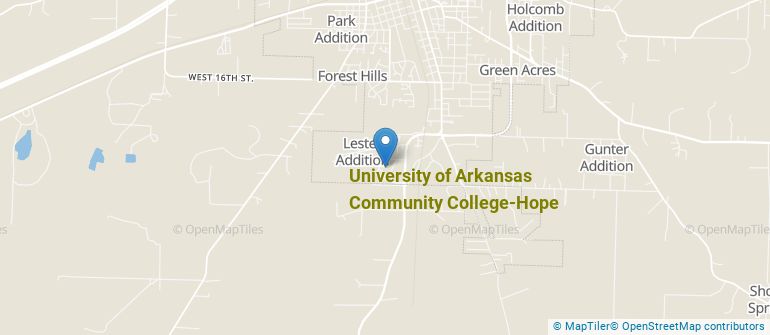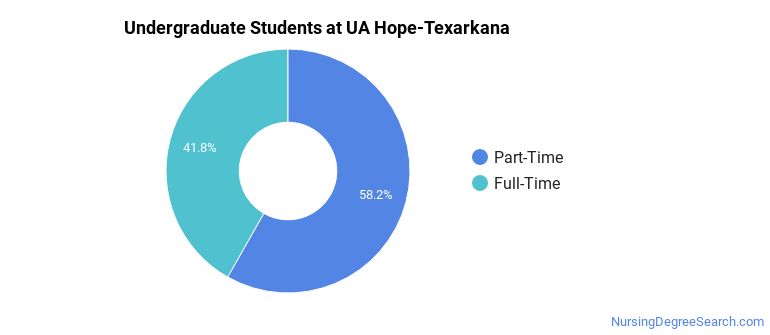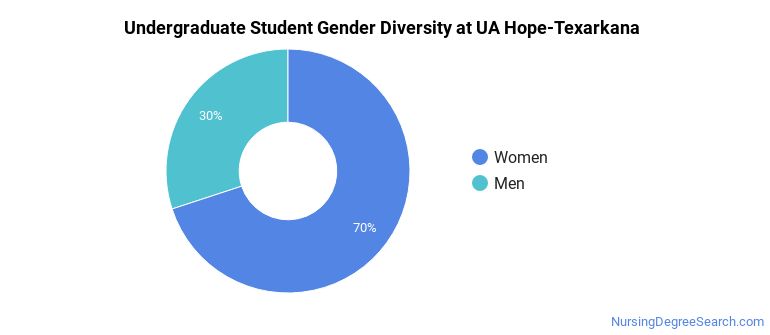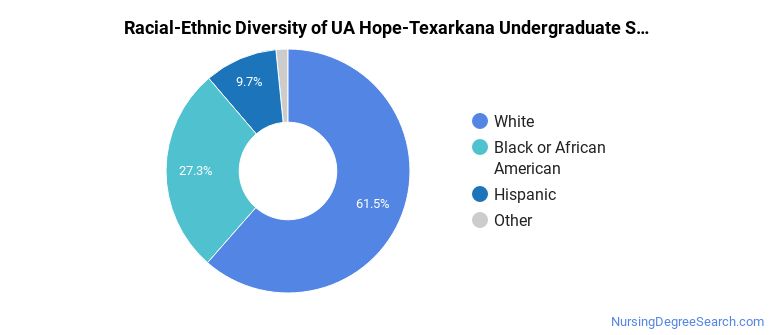University of Arkansas Hope-Texarkana Nursing Programs
University of Arkansas Hope-Texarkana is a public institution situated in Hope, Arkansas. The location of UA Hope-Texarkana is a good match for students who are interested in living in a college town while they pursue their degree.
Where Is University of Arkansas Hope-Texarkana?

Contact details for UA Hope-Texarkana are given below.
| Contact Details | |
|---|---|
| Address: | 2500 S Main, Hope, AR 71801 |
| Phone: | 870-777-5722 |
| Website: | www.uaht.edu |
How Do I Get Into UA Hope-Texarkana?
You can apply to UA Hope-Texarkana online at: https://www.uaht.edu/admission-application/
Can I Afford University of Arkansas Hope-Texarkana?
Student Loan Debt
Almost 66% of college students who graduated with the class of 2018 took out student loans, but that percentage varies from school to school. At UA Hope-Texarkana, approximately 1% of students took out student loans averaging $4,000 a year. That adds up to $16,000 over four years for those students.
University of Arkansas Hope-Texarkana Undergraduate Student Diversity

Gender Diversity
Of the 506 full-time undergraduates at UA Hope-Texarkana, 30% are male and 70% are female.

Racial-Ethnic Diversity
The racial-ethnic breakdown of University of Arkansas Hope-Texarkana students is as follows.

| Race/Ethnicity | Number of Grads |
|---|---|
| Asian | 3 |
| Black or African American | 138 |
| Hispanic or Latino | 49 |
| White | 311 |
| International Students | 0 |
| Other Races/Ethnicities | 5 |
University of Arkansas Hope-Texarkana Nursing Concentrations
The table below shows the number of awards for each concentration.
| Major | Basic Certificate | Associate’s | Undergraduate Certificate | TOTAL |
|---|---|---|---|---|
| Nursing Assistant/Aide and Patient Care Assistant/Aide | 53 | 0 | 0 | 53 |
| Registered Nursing | 0 | 28 | 0 | 28 |
| Licensed Practical/Vocational Nurse Training | 0 | 0 | 24 | 24 |
| TOTAL | 53 | 28 | 24 | 105 |
References
*The racial-ethnic minorities count is calculated by taking the total number of students and subtracting white students, international students, and students whose race/ethnicity was unknown. This number is then divided by the total number of students at the school to obtain the racial-ethnic minorities percentage.
More about our data sources and methodologies.
